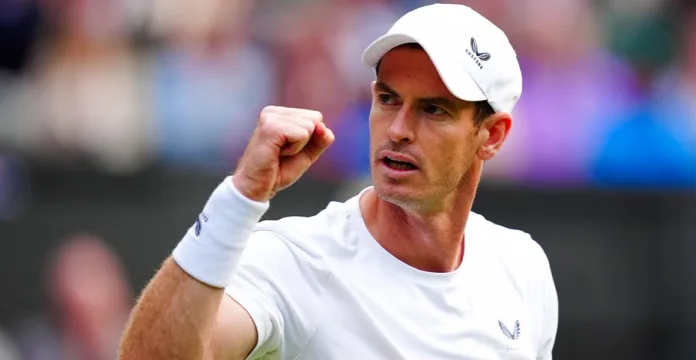Murray cites physical limitations for withdrawal from singles, marking the end of his illustrious tennis career
Andy Murray, the British tennis star and two-time Wimbledon champion, has announced that he will retire from professional tennis after the 2024 Paris Olympics. However, Murray will not compete in the singles tournament, choosing instead to focus solely on the doubles competition, where he will partner with fellow Brit Dan Evans.
Murray, 37, cited ongoing physical challenges, including issues with his back, as a key factor in his decision to forgo singles play. He explained that his current condition makes it difficult to handle the demands of playing two matches in a day, which is often required in Olympic competitions. “Obviously, me and Dan have made the commitment to each other that [doubles] was what we were going to prioritize,” Murray said. “That gives the team and us the best opportunity to get a medal, realistically.”
This announcement comes after an emotional farewell at Wimbledon, where Murray played a doubles match with his brother Jamie, marking his final appearance at the iconic tournament. Reflecting on his career and the recent decision, Murray expressed no regrets and emphasized the importance of finishing on his terms.
Murray’s career has been marked by significant achievements, including three Grand Slam titles and two Olympic gold medals. Despite recent physical setbacks, including a spinal cyst operation, Murray’s legacy in the sport remains substantial.
The 2024 Paris Olympics will be Murray’s last competitive outing, providing fans with a final opportunity to see him in action on the international stage. His decision to focus on doubles highlights his realistic approach to competing at the highest level while managing physical limitations.
In the broader context of tennis, Murray’s retirement marks the end of an era for British tennis and a significant moment in the sport’s history. His contributions have not only elevated British tennis but also inspired countless young players worldwide.
Analysis
Political Perspective
Andy Murray’s retirement decision highlights the broader discussions around athlete welfare and the physical demands of professional sports. As an athlete who has faced significant physical challenges, Murray’s case underscores the need for better support systems for athletes dealing with injuries and health issues. This situation may prompt further dialogue within the sports community and among policymakers about how to better protect athletes’ health and well-being throughout their careers.
Social Perspective
Murray’s announcement has a significant social impact, particularly among his fans and the British public who have followed his career closely. His openness about his physical struggles and decision-making process may resonate with many, highlighting the human aspect of professional sports. Murray’s retirement also marks the end of a significant chapter in British tennis, prompting reflection on his contributions to the sport and the inspiration he has provided to aspiring athletes.
Economic Perspective
The economic implications of Murray’s retirement include potential shifts in sponsorship deals, endorsements, and media coverage. As a high-profile athlete, Murray has been a valuable asset to sponsors and broadcasters. His retirement may lead to changes in how these entities invest in tennis and other sports. Additionally, Murray’s decision to continue in doubles may still provide economic benefits through continued visibility in major tournaments, albeit at a reduced scale compared to his singles career.
Technological Perspective
Murray’s career and retirement also highlight the advancements in sports medicine and technology that have allowed him to extend his career despite significant physical challenges. His use of modern medical interventions, including surgeries and rehabilitation techniques, exemplifies how technology can enhance athlete longevity. This case may encourage further investment and innovation in sports health technologies to support athletes facing similar issues.
Strategic Perspective
For British tennis, Murray’s retirement signals a transition period and a need to identify and support new talent to continue the legacy he has established. Strategically, this presents an opportunity for the Lawn Tennis Association (LTA) and other stakeholders to invest in grassroots programs and youth development. Ensuring a strong pipeline of talent will be crucial for maintaining Britain’s competitive presence in international tennis. Additionally, Murray’s continued involvement in tennis, potentially in coaching or mentorship roles, could be a valuable asset for the future development of the sport in the UK.
